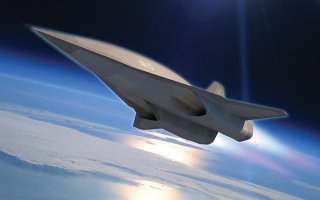The SR-72 'Son Of Blackbird' Could Fly at Mach 6 (With a Big Catch)
Does it even exist or will it ever exist?
The SR-71 Blackbird is one of the most iconic American aircraft of all time. For its purposes, the plane was an astonishing success; the aircraft’s cruising speed exceeded Mach 3, simply outrunning the missiles fired at it, and ended its thirty-year career with no aircraft lost. It was a symbol of American ingenuity, and the crowning achievement for the Lockheed Corporation’s “Skunk Works” experimental aircraft division.
Ultimately, what did the aircraft in was not missiles, but geopolitical changes and budget cuts. In the post-Cold War atmosphere, the justifications of spending enormous sums of money to maintain the plane were not as strong as they had been when the Soviet Union represented a permanent threat. Moreover, the task that the SR-71 had been built for – taking pictures of foreign installations and outrunning the missiles from said installations’ owners – could now be done cheaply and with less risk by spy satellites. The SR-71 was permanently retired in 1998.
However, 9/11 and the War on Terror, as well as the rise of China and renewed hostile relations with Russia, have changed this calculation and caused the Pentagon budget to increase once more. With American rivals working on countermeasures to supersonic technology, the logical next step in the arms race has been in hypersonic technology. In this context, the speed that the SR-71 represented has become relevant once more, and technological advances over the last thirty years have suggested the possibility of a new and improved Blackbird – a plane that Lockheed Martin has eagerly pitched as an answer to threats from Russia and China.
In the decades since the SR-71’s retirement, its speed records have been shattered by “scramjet” technology – projected to propel rockets at speeds of up to Mach 15. While current technology has not met this level, it has far exceeded the Mach 3 benchmark of the Blackbird. The SR-72 proposes to improve on the SR-71, traveling at speeds of at least Mach 6. The aircraft is also slated to be pilot-optional, including the option to function as a drone.
While the full-scale aircraft is not expected to enter service until 2030 – even if conditions are optimal – a demonstrator aircraft has been expected by 2023. However, it has been some time since any definitive update on the aircraft’s status; given the turmoil created by the COVID-19 pandemic, it would not be surprising if delays were introduced into the process.
However, one thing seems to be clear: if the SR-72 will have the capacities advertised, the original plane’s legacy will have been left in good hands.
Trevor Filseth is a current and foreign affairs writer for the National Interest.

